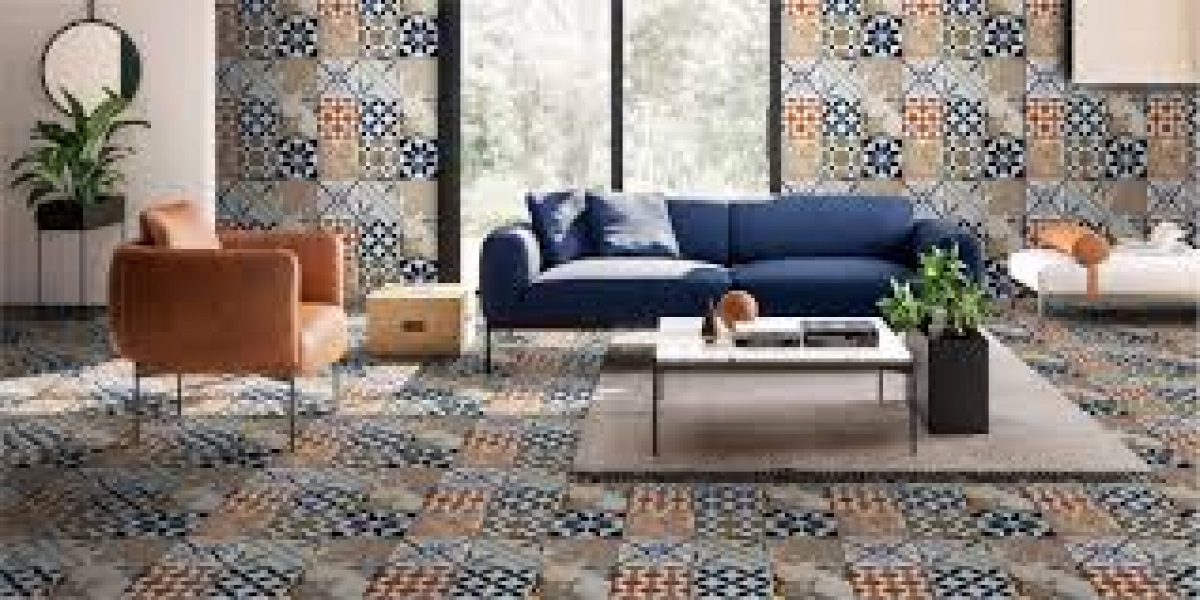Blue Moroccan tiles have captured the imagination of interior designers and homeowners alike, thanks to their rich history, intricate designs, and captivating color palette. These tiles offer a blend of artistry and tradition, while the calming, striking hues of blue add a sense of serenity and elegance to any space. Whether used in kitchens, bathrooms, or outdoor areas, blue Moroccan tiles provide a perfect balance of function and beauty, making them an ideal choice for both traditional and modern homes.
The Allure of Blue
In Moroccan culture, the color blue holds a special significance. It is often associated with peace, tranquility, and protection, evoking images of the sky and sea. This symbolism is deeply embedded in the use of blue in Moroccan tile design, where varying shades of blue—from deep indigo to soft turquoise—create an atmosphere of calm and relaxation.
The versatility of blue Moroccan tiles makes them an excellent choice for a variety of design styles. Whether you're looking to create a bold, eye-catching feature or a more subtle, calming environment, these tiles can be customized to suit your vision. The blue tones often combine with white or other neutral colors, resulting in patterns that are both timeless and visually appealing.
Intricate Patterns and Craftsmanship
One of the most distinctive features of blue Moroccan tiles is the intricate craftsmanship behind each design. Traditional Moroccan tiles, also known as zellige tiles, are handcrafted from natural clay and glazed to create a unique, glossy finish. Each tile is cut into geometric shapes or detailed motifs, often inspired by Islamic art and architecture. The precision and artistry involved in creating these tiles make them a true work of art.
The geometric patterns commonly found in Moroccan tiles are not only beautiful but also carry cultural and spiritual significance. Repetitive shapes like stars, diamonds, and hexagons represent unity and infinity, reflecting the deep connection between Moroccan art and philosophy. These designs, combined with the stunning blue hues, create a mesmerizing visual effect that enhances the beauty of any room.
Versatility in Design
Blue Moroccan tiles can be used in a wide range of spaces, from kitchens and bathrooms to outdoor patios and living areas. One of the most popular applications is as a kitchen backsplash, where the tiles serve as a focal point, adding texture, depth, and color. The bold blue patterns provide contrast against neutral cabinetry and countertops, creating a dynamic and vibrant kitchen space.
In bathrooms, blue Moroccan tiles can be used on floors or walls to create a spa-like atmosphere. The calming shades of blue evoke feelings of tranquility and relaxation, making the bathroom a perfect place to unwind. Whether used in a shower enclosure or as an accent wall, these tiles bring a touch of elegance and cultural richness to the room.
Outdoors, blue Moroccan tiles can be used to transform patios or courtyards into Mediterranean-inspired retreats. Their durability and resistance to weather make them a practical choice for exterior spaces, while their intricate patterns add a sense of artistry and sophistication. Used on walls, floors, or even as decorative accents, these tiles can completely elevate the look of outdoor areas.
Combining Tradition with Modern Design
One of the key strengths of blue Moroccan tiles is their ability to blend traditional craftsmanship with contemporary design trends. In modern homes, these tiles can be paired with minimalist elements to create a striking contrast. The intricate patterns and vibrant colors of the tiles stand out against sleek, simple furnishings, adding warmth and character to an otherwise understated space.
For a more eclectic look, blue Moroccan tiles can be mixed with other materials like wood, metal, or stone. This combination of textures and styles creates a layered, dynamic aesthetic that feels both modern and timeless. Whether used in small doses or across an entire room, these tiles bring a sense of cultural depth and artistic flair to any interior design project.
Practical Benefits
Beyond their aesthetic appeal, blue Moroccan tiles offer several practical benefits. Their glazed surface makes them highly durable and resistant to moisture, making them ideal for use in areas prone to spills and splashes, like kitchens and bathrooms. They are also easy to clean and maintain, ensuring they retain their beauty over time.
Additionally, blue Moroccan tiles are heat-resistant, making them a great choice for areas near stoves, fireplaces, or outdoor barbecues. Their durability ensures that they can withstand high temperatures without cracking or fading, making them both a beautiful and practical option for various spaces.
Conclusion
Blue Moroccan tiles combine the timeless beauty of traditional craftsmanship with the calming allure of the color blue, making them a perfect choice for a variety of design applications. Whether you're looking to add a bold focal point to your kitchen, create a serene bathroom retreat, or elevate an outdoor space, these tiles bring a sense of elegance, artistry, and cultural richness to any environment.
Their versatility, durability, and timeless appeal make blue Moroccan tiles a truly unique design element, capable of transforming any space into one that feels both beautiful and meaningful. By incorporating blue Moroccan tiles into your home, you're not just adding decorative flair—you’re embracing a centuries-old tradition of artistry and craftsmanship.








